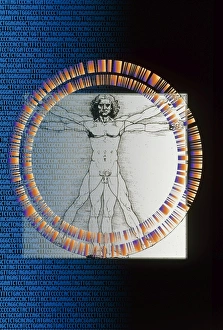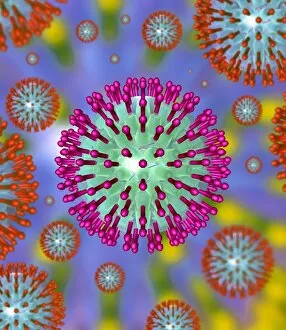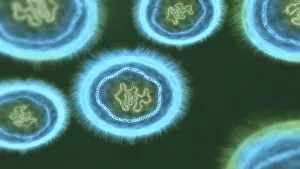Genome Collection (page 6)
Genome: Unlocking the Blueprint of Life In a world teeming with microscopic wonders, the genome stands as nature's intricate code that holds the key to life itself
All Professionally Made to Order for Quick Shipping
Genome: Unlocking the Blueprint of Life In a world teeming with microscopic wonders, the genome stands as nature's intricate code that holds the key to life itself. From the replication of herpes virus particles to unraveling grapevine genomes, humanity has embarked on an awe-inspiring journey into this realm. Computer artwork vividly depicts herpes virus particles replicating, showcasing their ability to multiply and spread within host cells. This captivating visual representation serves as a reminder of both their destructive potential and our ongoing battle against them. Advancements in science have allowed us to sequence the grapevine genome, shedding light on its genetic makeup and enabling us to better understand its resilience against diseases. By deciphering these complex sequences, we can safeguard vineyards from threats and ensure sustainable wine production for generations to come. The creation of oil using designer microbes represents another remarkable feat made possible by manipulating genomes. Through careful engineering, scientists have harnessed microbial powerhouses capable of producing valuable resources efficiently and sustainably – revolutionizing industries while reducing environmental impact. Artwork depicting the creation of artificial life encapsulates our relentless pursuit in understanding genomes' building blocks. As we delve deeper into this frontier, we strive not only for knowledge but also for groundbreaking applications that could shape our future. Conceptual images portraying DNA serve as powerful symbols representing life's fundamental blueprint. These iconic double helices remind us that every living organism carries within it an intricate set of instructions guiding development and function. Microscopic views reveal astonishing details about viruses such as smallpox or bacteriophages preying upon bacteria surfaces. These glimpses into hidden worlds highlight how genomes drive these tiny entities' behavior – dictating their survival strategies or pathogenic potential. Through continuous exploration and research, humanity aims to unlock further mysteries concealed within genomes - be it decoding elusive viral structures or uncovering novel therapeutic targets against diseases like herpes infection. In essence, the genome captivates our imagination, offering a gateway to understanding life's complexity.

















